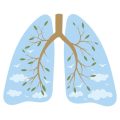Introduction to Osteoporosis in British Older Adults
Osteoporosis, often referred to as the “silent disease,” is a significant public health concern among older adults across the United Kingdom. Characterised by decreased bone density and increased fragility, osteoporosis substantially elevates the risk of fractures, particularly in the hip, spine, and wrist. According to data from the National Osteoporosis Society, it is estimated that over 3 million people in the UK are living with osteoporosis, with the prevalence sharply increasing with age. Women, especially post-menopausal women, are at greater risk due to hormonal changes, but men are not immune—around one in five men over 50 will experience an osteoporotic fracture. Several factors contribute to osteoporosis risk in British older adults, including genetics, long-term steroid use, inadequate calcium and vitamin D intake (a common issue given limited sunlight exposure in the UK), sedentary lifestyles, smoking, excessive alcohol consumption, and certain medical conditions such as rheumatoid arthritis or thyroid disorders. The impact of osteoporosis on the ageing population is far-reaching. Beyond the immediate physical consequences of fractures—such as pain, loss of independence, and increased mortality—there is also a profound effect on mental well-being and quality of life. Furthermore, osteoporotic fractures place a considerable financial strain on NHS resources due to hospital admissions and long-term care needs. Recognising the scale and seriousness of osteoporosis in Britain’s ageing population underscores the necessity for evidence-based approaches to its management and prevention.
2. Screening and Diagnosis: Current UK Guidelines
When it comes to osteoporosis management in British older adults, early identification is absolutely crucial. The NHS has developed robust protocols that are both practical and grounded in the latest evidence. Under current UK guidelines, screening is primarily targeted at individuals over 50 who have risk factors, such as a history of fragility fractures, long-term steroid use, or family history of osteoporosis.
NHS Protocols for Osteoporosis Screening
The NHS recommends a proactive approach, especially in primary care settings. GPs are encouraged to assess fracture risk in patients with suggestive medical histories or clinical features. The process typically begins with a thorough medical evaluation and may be followed by further assessment using the FRAX tool—a validated calculator endorsed by NICE (National Institute for Health and Care Excellence).
Use of the FRAX Tool
The FRAX tool is widely implemented across the UK and helps estimate the 10-year probability of a major osteoporotic fracture. It considers factors such as age, sex, weight, previous fractures, parental hip fracture history, smoking status, glucocorticoid use, rheumatoid arthritis, secondary osteoporosis causes, and alcohol intake. Notably, it can function with or without bone mineral density (BMD) results.
| Risk Factor | Considered by FRAX? | Impact on Risk Score |
|---|---|---|
| Age & Sex | Yes | Older age & female sex increase risk |
| BMI | Yes | Lower BMI increases risk |
| Previous Fracture | Yes | History increases risk significantly |
| Smoking/Alcohol Use | Yes | Both elevate risk scores |
| BMD (optional) | If available | Lowers or raises risk based on T-score |
Best Practices for Early Identification in British Settings
The gold standard for diagnosis remains Dual-energy X-ray Absorptiometry (DXA) scanning, particularly for those identified at intermediate or high risk via FRAX. In practice, clinicians often combine FRAX results with clinical judgement—taking into account patient preferences and co-morbidities. Multidisciplinary collaboration is encouraged: GPs work closely with rheumatologists, endocrinologists, and specialist nurses to ensure timely intervention. Importantly, public health campaigns in Britain focus on raising awareness among both healthcare professionals and the general population about the importance of early detection.
Summary Table: Osteoporosis Screening Pathway in the UK
| Step | Description/Action |
|---|---|
| 1. Risk Assessment in Primary Care | Identify patients aged 50+ with risk factors using questionnaires or during routine checks. |
| 2. Calculate FRAX Score | Estimate 10-year fracture risk with/without BMD data. |
| 3. Specialist Referral if Indicated | If moderate/high risk: refer for DXA scan or specialist opinion. |
| 4. Confirm Diagnosis & Initiate Management Plan | BMD testing confirms diagnosis; treatment started based on NICE recommendations. |
| 5. Follow-up & Monitoring | Regular monitoring and lifestyle advice provided in community settings. |
This structured approach ensures that British older adults benefit from evidence-based pathways tailored to local needs—helping catch osteoporosis before it leads to devastating fractures.

3. Pharmacological Management: Evidence and Practicalities
When it comes to osteoporosis management among older adults in the UK, pharmacological intervention is a cornerstone of care. Bisphosphonates are widely recognised as first-line therapy due to their robust evidence base in reducing fracture risk. Commonly prescribed agents include alendronate, risedronate, and zoledronic acid, all of which have demonstrated efficacy in large-scale trials involving British populations. NICE guidelines provide clear recommendations for their use, particularly in postmenopausal women and older men at high fracture risk.
However, adherence to bisphosphonate therapy poses a significant challenge in real-world practice. Many patients experience gastrointestinal side effects or find the dosing regimen—such as remaining upright for 30 minutes after taking oral tablets—difficult to follow. These practical barriers often lead to suboptimal treatment persistence, with UK data suggesting that less than half of patients remain on therapy after one year.
From a UK healthcare perspective, cost-effectiveness and safety are crucial considerations. The NHS prioritises medications with proven value, and bisphosphonates fit this criterion well due to their low cost and established track record. For patients who cannot tolerate oral agents, intravenous options like zoledronic acid offer an alternative, albeit with logistical challenges related to infusion services.
The role of other pharmacological agents—such as denosumab or selective oestrogen receptor modulators—is typically reserved for those who are intolerant or unresponsive to bisphosphonates. Each alternative comes with its own set of monitoring requirements and potential risks, such as hypocalcaemia or atypical fractures, which must be weighed carefully within the context of individual patient profiles.
Ultimately, successful pharmacological management in the UK relies on personalised care, ongoing patient education, and coordinated efforts between primary and secondary care providers. Engaging patients in shared decision-making and addressing barriers early can improve adherence rates and help achieve optimal outcomes in the fight against osteoporosis.
4. Lifestyle and Non-Pharmacological Interventions
When addressing osteoporosis in British older adults, its essential to look beyond medication and focus on practical lifestyle changes that are deeply rooted in evidence. Lets explore the key elements of diet, physical activity, and fall prevention—each tailored to the realities of life in the UK.
Dietary Considerations: Building Bone Health from the Kitchen
British dietary habits are unique, often reflecting a mix of traditional meals and modern trends. While the classic fry-up is comforting, bone health relies on a balanced intake of calcium, vitamin D, and protein. For many older adults, especially those living alone or on a tight budget, achieving this can be challenging.
| Nutrient | Recommended Sources (UK) | Daily Requirement (Adults 65+) |
|---|---|---|
| Calcium | Dairy (milk, cheese), fortified plant milks, leafy greens | 700mg |
| Vitamin D | Oily fish (salmon, mackerel), fortified cereals, supplements (especially in winter) | 10mcg |
| Protein | Pulses, lean meats, eggs, dairy products | ~1g per kg body weight |
Given the UKs limited sunlight—particularly in northern regions—vitamin D supplementation is widely recommended by the NHS during autumn and winter months. Encouraging small changes like adding an extra portion of dairy or choosing fortified breakfast cereals can make a meaningful difference without overhauling familiar routines.
Physical Activity: Keeping Bones and Balance Strong
The UK Chief Medical Officers recommend that older adults engage in at least 150 minutes of moderate-intensity activity each week, with an emphasis on activities that improve strength and balance. This could mean brisk walking in the park, joining a local bowls club, or participating in NHS-supported exercise classes tailored for seniors. Incorporating daily movement—even gardening or housework—helps maintain muscle mass and reduces fracture risk.
Sample Weekly Activity Plan for British Older Adults
| Day | Activity Suggestion | Duration/Intensity |
|---|---|---|
| Monday | Brisk walk around local green space | 30 mins / Moderate |
| Wednesday | NHS balance & strength class (online or community centre) | 45 mins / Moderate to vigorous |
| Friday | Gardening or allotment work | 60 mins / Light to moderate |
| Sunday | Dancing or light yoga at home with friends/family support | 30 mins / Gentle to moderate |
Fall Prevention Strategies: Practical Steps for British Homes and Communities
The unpredictable British weather—from icy pavements to rainy days—increases fall risks. Evidence shows that simple interventions can make homes safer:
- Tidy up tripping hazards: Secure loose rugs and remove clutter from walkways.
- Adequate lighting: Install brighter bulbs in hallways and staircases.
- Aids where needed: Handrails for stairs and grab bars in bathrooms are readily available through local councils or charities.
- Shoes matter: Well-fitting shoes with non-slip soles reduce accidents indoors and out.
- Vision checks: Regular eye tests help spot issues early; many opticians offer home visits for housebound individuals under NHS schemes.
Tapping into local community resources—such as Age UK falls prevention workshops or council-led home safety checks—can provide both reassurance and practical support. By working these evidence-based strategies into daily life, British older adults can take meaningful steps to protect their independence and bone health.
5. Addressing Health Disparities and Barriers in Care
The landscape of osteoporosis management in British older adults is shaped not only by clinical guidelines, but also by the complex realities of health disparities and barriers to care. Understanding these factors is crucial for practitioners aiming to deliver evidence-based interventions that are genuinely accessible and effective for all segments of the population.
Analysis of Access Issues
Access to osteoporosis screening and specialist care varies significantly across the UK. Rural populations often face longer travel times and fewer specialist clinics, while urban centres may encounter lengthy NHS waiting lists. Additionally, awareness of osteoporosis risk and available services remains patchy, especially among those who do not regularly engage with primary care. Digital exclusion is another growing concern—many older adults lack internet access or confidence using online resources, limiting their ability to benefit from digital health initiatives like virtual fracture clinics or remote consultations.
Socioeconomic Inequalities
Socioeconomic status plays a defining role in both osteoporosis risk and outcomes. Lower-income groups tend to experience higher rates of vitamin D deficiency, suboptimal nutrition, and reduced physical activity—all critical factors in bone health. These groups may also struggle with costs associated with prescription charges, transport to appointments, or even suitable housing conditions that prevent falls. The consequences are stark: delayed diagnosis, under-treatment, and ultimately a greater burden of fragility fractures among the most disadvantaged older adults in Britain.
Culturally Sensitive Approaches
Britain’s increasingly diverse ageing population brings its own set of challenges and opportunities for osteoporosis management. Language barriers can impede clear communication about risks and adherence to treatment plans, particularly within South Asian or Eastern European communities. Cultural beliefs around medication use, diet (such as vegetarianism or lactose intolerance), and attitudes towards exercise require sensitive navigation. Evidence shows that tailored health education—delivered in community languages and respecting cultural norms—can dramatically improve engagement and outcomes.
Practical Strategies for Reducing Barriers
To close these gaps, multi-level strategies are needed: community outreach programmes co-designed with local leaders; enhanced funding for fracture liaison services in underserved areas; removal of financial barriers through prescription exemptions for vulnerable groups; and ongoing training for healthcare staff on cultural competence. By embedding equity into every stage of osteoporosis care—from risk assessment to rehabilitation—practitioners can help ensure that advances in evidence-based management translate into real-world benefits for all British older adults.
6. Future Directions and Ongoing Research in the UK
Looking ahead, osteoporosis management for British older adults is entering an exciting era shaped by cutting-edge clinical trials, forward-thinking public health strategies, and innovative digital health solutions.
Innovative Clinical Trials
Across the UK, leading research centres such as those affiliated with the National Institute for Health and Care Research (NIHR) are spearheading studies into novel therapeutics and interventions tailored to the unique needs of British populations. From investigating new bone-forming agents to evaluating optimal dosing regimens for established medications like bisphosphonates, these trials promise to refine our evidence base and ensure that future treatments are both safe and effective for older adults living in Britain.
Personalised Medicine Approaches
With advances in genetic profiling and risk stratification, several UK-based studies are exploring how personalised medicine could better predict fracture risk and tailor prevention strategies. This shift towards bespoke care aims to move away from one-size-fits-all approaches, instead offering targeted support to those most at risk.
Public Health Initiatives
The NHS and Public Health England continue to prioritise bone health through community screening programmes, awareness campaigns, and collaborative efforts with local councils. Programmes like Stronger Bones for Life focus on early identification of osteoporosis and empowering individuals to adopt lifestyle changes that support skeletal health. There’s also a growing recognition of the importance of nutrition—particularly vitamin D fortification—and fall prevention exercises within care homes and community settings.
Digital Health Tools
Digital innovation is transforming how osteoporosis is managed day-to-day. In recent years, British clinicians have begun leveraging telemedicine platforms for remote monitoring, while mobile applications now remind patients about medication adherence or facilitate home-based physiotherapy. Moreover, electronic fracture risk assessment tools—such as FRAX integrated within primary care systems—are helping GPs identify at-risk patients earlier than ever before.
A Collaborative Future
The convergence of robust clinical research, proactive public health policies, and smart digital interventions offers hope for improved outcomes among British older adults. As ongoing research continues to inform best practice, there is a palpable sense of optimism that the next decade will see significant strides in both the prevention and management of osteoporosis across the UK.


